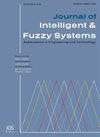基于隐马尔可夫模型的隐含波动面建模与预测
IF 1
4区 计算机科学
Q3 COMPUTER SCIENCE, ARTIFICIAL INTELLIGENCE
引用次数: 0
摘要
隐含波动率在期权市场中起着至关重要的作用,期权执行期和到期日隐含波动率的集合称为隐含波动率面(IVS)。为了捕捉IVS的动态,本研究基于隐马尔可夫模型(HMM)的状态切换框架,研究了IVS的潜在状态及其关系。首先建立了日隐含波动率的横截面模型,并将得到的回归因子作为IVS的代理。然后,利用这些潜在因素,利用隐马尔可夫模型对IVS动力学进行建模。利用隐马尔可夫模型的优点,对每天的数据进行隐藏状态的识别,从而实现相应的时间分布、特征以及隐藏状态之间的转换。对上证50ETF期权进行了实证研究,分析结果表明HMM可以捕捉到IVS的潜在因素。实现的状态反映了不同的财务特征,它们的一些典型特征和转移与某些事件有关。此外,利用HMM来预测横截面模型的回归因子,可以进一步预测隐含波动率。以自回归综合移动平均模型、向量自回归模型和支持向量回归模型作为比较基准。结果表明,隐马尔可夫模型对隐含波动率的预测效果优于其他模型。本文章由计算机程序翻译,如有差异,请以英文原文为准。
Hidden Markov model-based modeling and prediction for implied volatility surface1
The implied volatility plays a pivotal role in the options market, and a collection of implied volatilities across strike and maturity is known as the implied volatility surface (IVS). To capture the dynamics of IVS, this study examines the latent states of IVS and their relationship based on the regime-switching framework of the hidden Markov model (HMM). The cross-sectional models are first built for daily implied volatilities, and the obtained regression factors are regarded as the proxies of the IVS. Then, having these latent factors, the HMM is employed to model the dynamics of IVS. Take the advantages of HMM, the hidden state for each daily data is identified to achieve the corresponding time distribution, the characteristics, and the transition between the hidden states. The empirical study is conducted on the Shanghai 50ETF options, and the analysis results indicate that the HMM can capture the latent factors of IVS. The achieved states reflect different financial characteristics, and some of their typical features and transfer are associated with certain events. In addition, the HMM exploited to predict the regression factors of the cross-sectional models enables the further forecasting of implied volatilities. The autoregressive integrated moving average model, the vector auto-regression model, and the support vector regression model are regarded as benchmarks for comparison. The results show that the HMM performs better in the implied volatility prediction compared with other models.
求助全文
通过发布文献求助,成功后即可免费获取论文全文。
去求助
来源期刊

Journal of Intelligent & Fuzzy Systems
工程技术-计算机:人工智能
CiteScore
3.40
自引率
10.00%
发文量
965
审稿时长
5.1 months
期刊介绍:
The purpose of the Journal of Intelligent & Fuzzy Systems: Applications in Engineering and Technology is to foster advancements of knowledge and help disseminate results concerning recent applications and case studies in the areas of fuzzy logic, intelligent systems, and web-based applications among working professionals and professionals in education and research, covering a broad cross-section of technical disciplines.
 求助内容:
求助内容: 应助结果提醒方式:
应助结果提醒方式:


